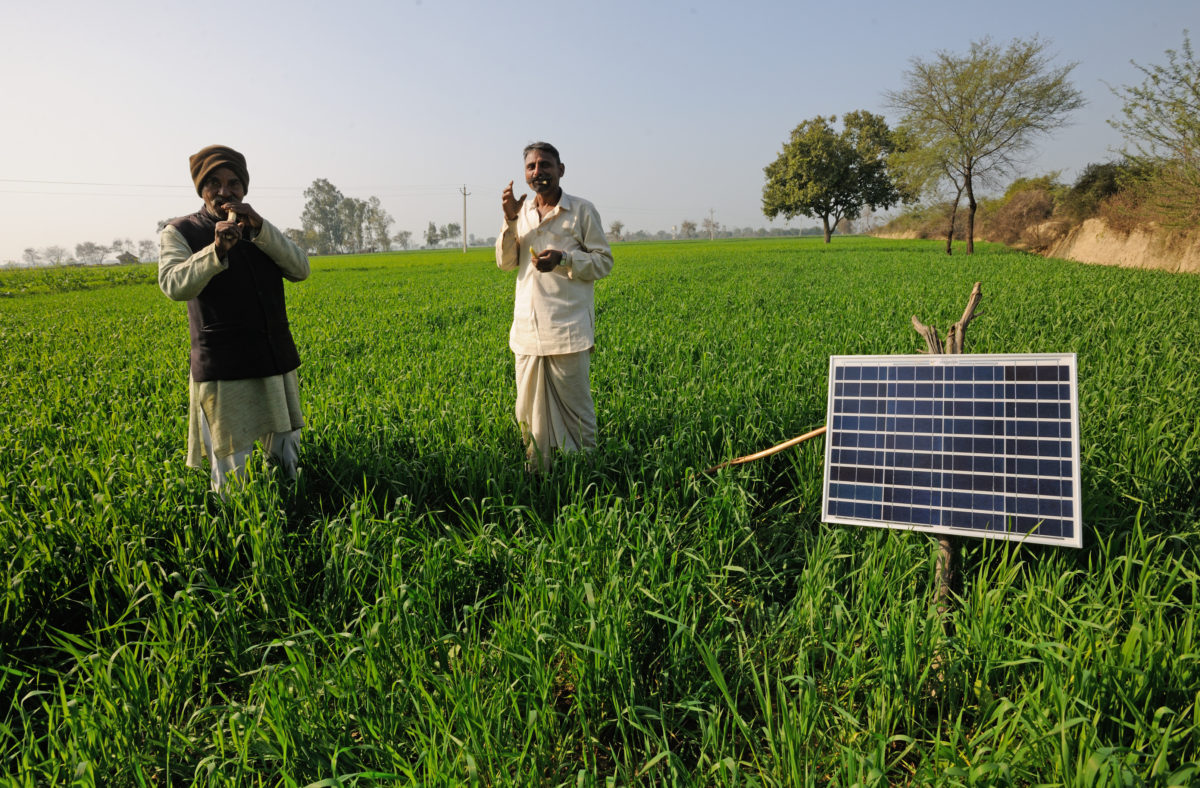A new report by two of India’s leading energy institutions forecasts that the country’s renewables expansion could deliver an additional 300,000 new jobs over the next five years.
As India’s economy grows to accommodate a rising middle class, so too does the nation’s thirst for electricity and – with it – a growing demand for renewable energy.
The National Solar Mission’s bold goal of reaching 100 GW of solar capacity by 2022 is just part of a wider push to have India reach 175 GW of renewable energy capacity installed by that date.
These targets are helping to drive investment and interest in solar and wind power, with rooftop solar PV in particular seen as a potentially transformative sector both in terms of jobs and installations over the next five years.
This was the conclusion of the Council on Energy, Environment and Water (CEEW) and the Natural Resources Defense Council (NRDC), which has co-published a report this week titled Greening India’s Workforce: Gearing Up For Expansion of Solar and Wind Power in India.
“Clean energy expansion is generating thousands of new jobs while meeting India’s climate and economic goals,” said co-author of the report Nehmat Jaur, who is NRDC’s consultant and development economist. “With this tremendous opportunity, India is stepping up as a global leader in demonstrating how a growing economy can scale up renewables, generate employment and provide access in the face of rising energy demands.”
The report’s conservative estimate is that 300,000 jobs in the clean energy sector will be created over five years, but if India is successful in hitting its 175 GW target, then more than one million employment opportunities could be created.
Rooftop solar alone could support 238,000 jobs, said the CEEW, with large-scale solar creating a further 58,600 jobs.
On Twitter, India's Energy Minister Piyush Goyal welcomed the report, tweeting:

According to the report, 80% of the forecast jobs will be created during the construction phase of solar and wind projects, but the large pipeline of projects will create enough opportunities for such workers to remain employed for quite a while, the CEEW’s program associate Neeraj Kuldeep said.
Nationwide, the states of Uttar Pradesh and Maharashtra will support the most solar jobs.
In 2016, India’s renewable energy sector added 21,000 new jobs – a figure that is set to increase to 25,000 for 2017.
“Since most of these jobs are in the rooftop solar PV sector, central and state governments must provide greater policy support to rooftop PV,” concluded Kuldeep.
This content is protected by copyright and may not be reused. If you want to cooperate with us and would like to reuse some of our content, please contact: editors@pv-magazine.com.



4 comments
By submitting this form you agree to pv magazine using your data for the purposes of publishing your comment.
Your personal data will only be disclosed or otherwise transmitted to third parties for the purposes of spam filtering or if this is necessary for technical maintenance of the website. Any other transfer to third parties will not take place unless this is justified on the basis of applicable data protection regulations or if pv magazine is legally obliged to do so.
You may revoke this consent at any time with effect for the future, in which case your personal data will be deleted immediately. Otherwise, your data will be deleted if pv magazine has processed your request or the purpose of data storage is fulfilled.
Further information on data privacy can be found in our Data Protection Policy.